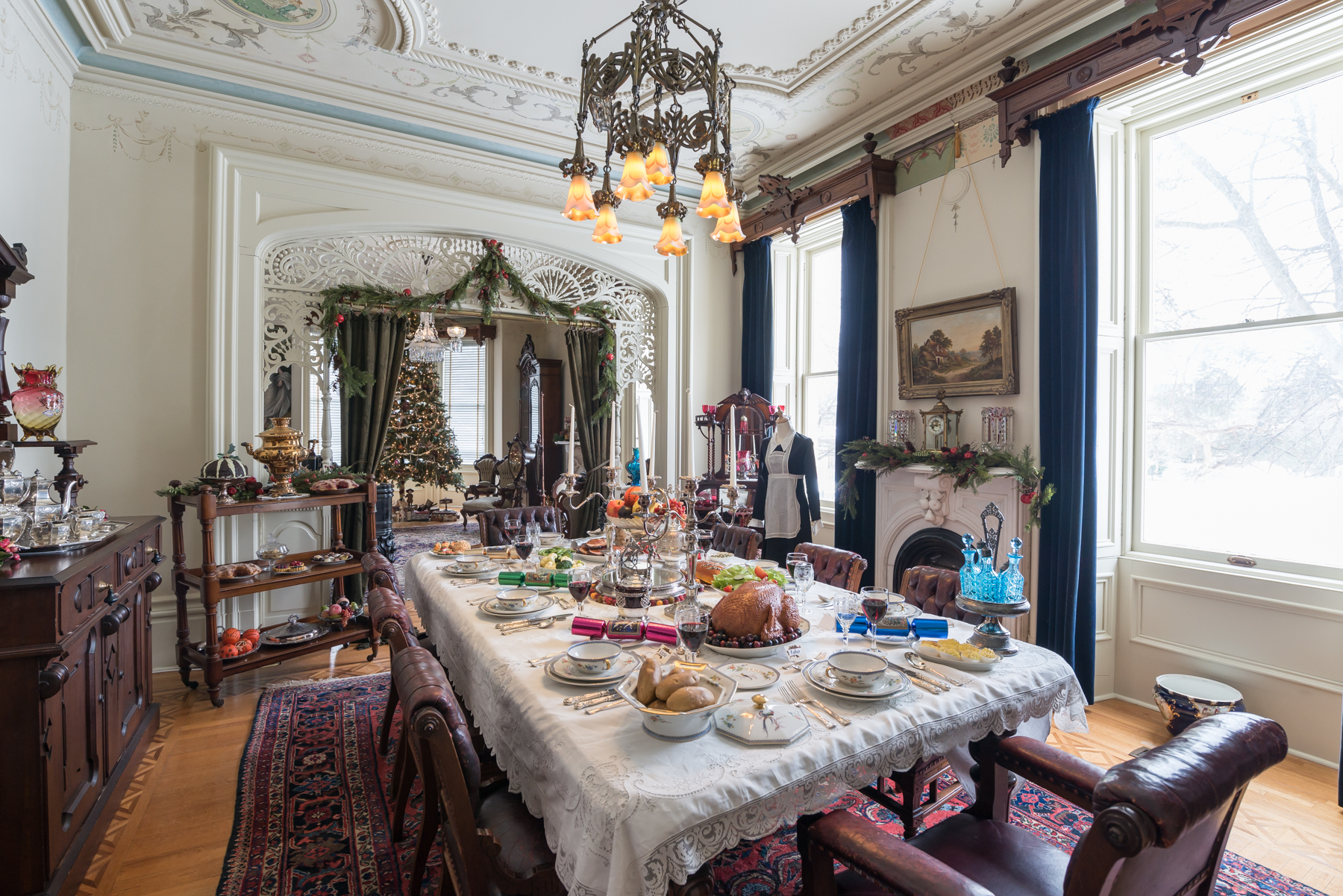We’re about to have a Christmas and holiday season unlike anything in recent memory. A global pandemic with resulting national, provincial and local public health restrictions will shift the way we celebrate countless holiday traditions – the parties, the guest lists, the activities, the menus, the travelling – all of it.
Thankfully, Castle Kilbride in Baden has kept at least one tradition intact – the annual Victorian Christmas decoration of the grand, historic Livingston family home. Outside and inside, from top to bottom, the house (technically not a castle), absolutely glows. With parlour Christmas trees, window lights, dining table candelabras, garlands, wreaths, ribbons and expressions of family in every corner.
This year, tours of Christmas at the Castle are guided by Kilbride staff, which are truly a bonus for every visitor. What is normally a self-guided tour, is now a more engaging 35-minute introduction to the family, their history, the design of the lavish home.
Castle Kilbride was built in 1877 for James and Louise Livingston and their large family. The house was named after Livingston’s home in East Kilbride, Scotland. James emigrated to Canada with his brother John in 1855, at the age of 16. They became known for growing flax and manufacturing linseed oil in Baden, Wilmot Township and southern Ontario.
Three generations of the Livingston family resided in the home until 1988 when the remaining family member could no longer manage the upkeep and financial investment. After a short period of ownership by a developer, during which the house suffered neglect and deterioration, it was purchased by Wilmot Township and restored. Castle Kilbride opened as a museum in 1994 and was named a Canadian National Historic Site.
The Christmas décor is one thing, but the stunning ‘trompe l’oeil’ paintings and wall murals are really something else. The work was commissioned by Livingston around 1879 shortly after the house was built, and painted by artist Henry Scharstein. They represent some of the finest examples of ‘trompe l’oeil’ (an art technique that uses realistic imagery to create the optical illusion that the depicted objects exist in three dimensions) in Canada.
By providing guided tours, assistant curator, Sherri Gropp indicated it’s been a great way to connect with so many local first-time visitors to Castle Kilbride.
“It’s been wonderful to cater to our own community,” Gropp said.
Of course, having the advantage of a knowledgeable curator on hand, I was curious to know whether the Livingston family had been affected by the 1918 Influenza pandemic. Between September and December of 1918, a deadly second wave killed thousands across the province of Ontario, and hundreds in our local cities and surrounding communities.
Gropp assured me that no one from the family died during the second wave, however, Laura Louise, the third generation Livingston, was born in May 1918. By Christmas time, the reports of influenza deaths would have been widespread, and the Livingston family kept the Christmas celebrations quite small.
Over 102 years ago, families in Waterloo Region were also adjusting their Christmas plans and activities due to a global pandemic.
BEFORE YOU GO
Entrance for Christmas at the Castle is limited to Saturday and Sunday, 11am–4pm, now until Jan. 3, 2021. Admission for adults is $9, $8 for seniors or students, $5 for children (plus online ticket fees).
Tickets are for timed entry and must be purchased in advance. Groups are limited to household/bubble to a maximum of five people. Photography is not permitted of the interior of Castle Kilbride. Double-check the website before booking as requirements may change due to Waterloo Region’s Public Health measures.




Leave a Reply